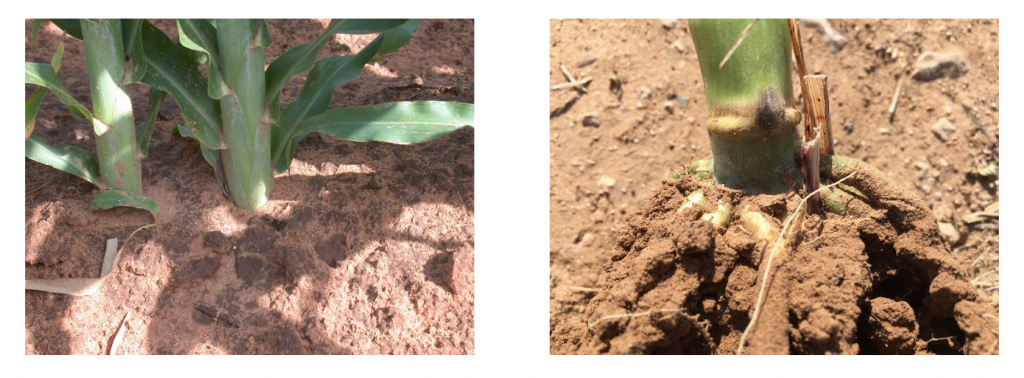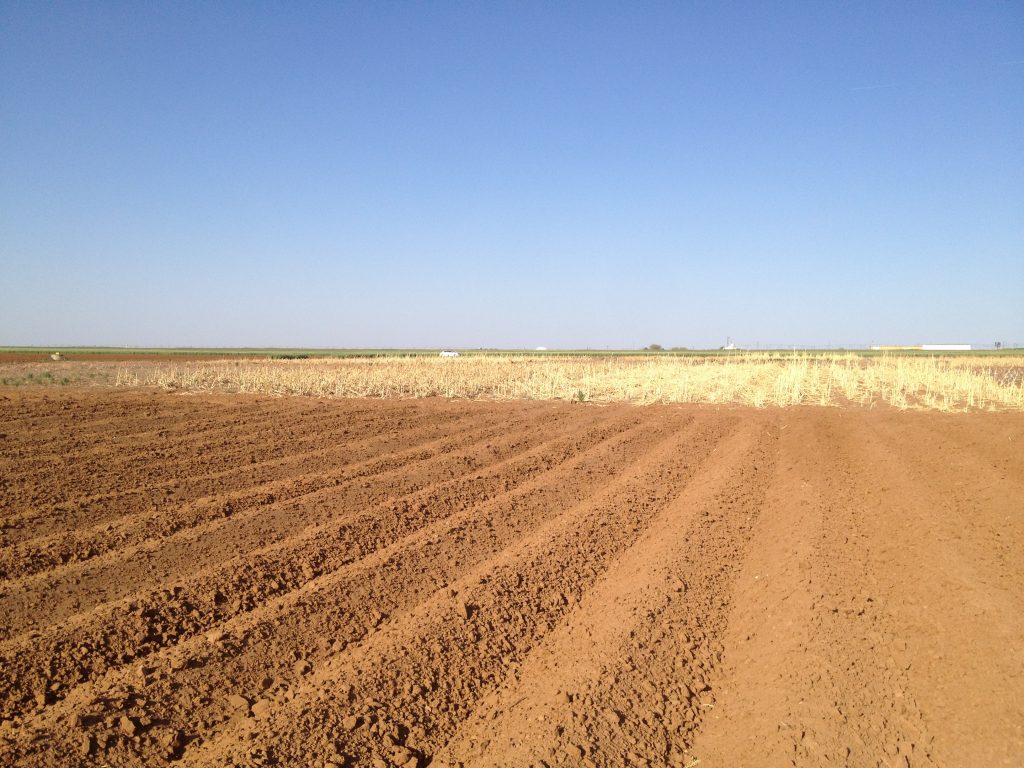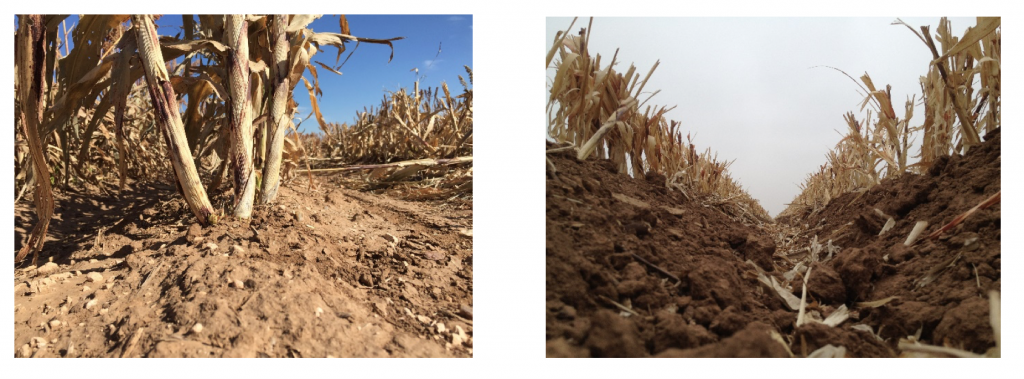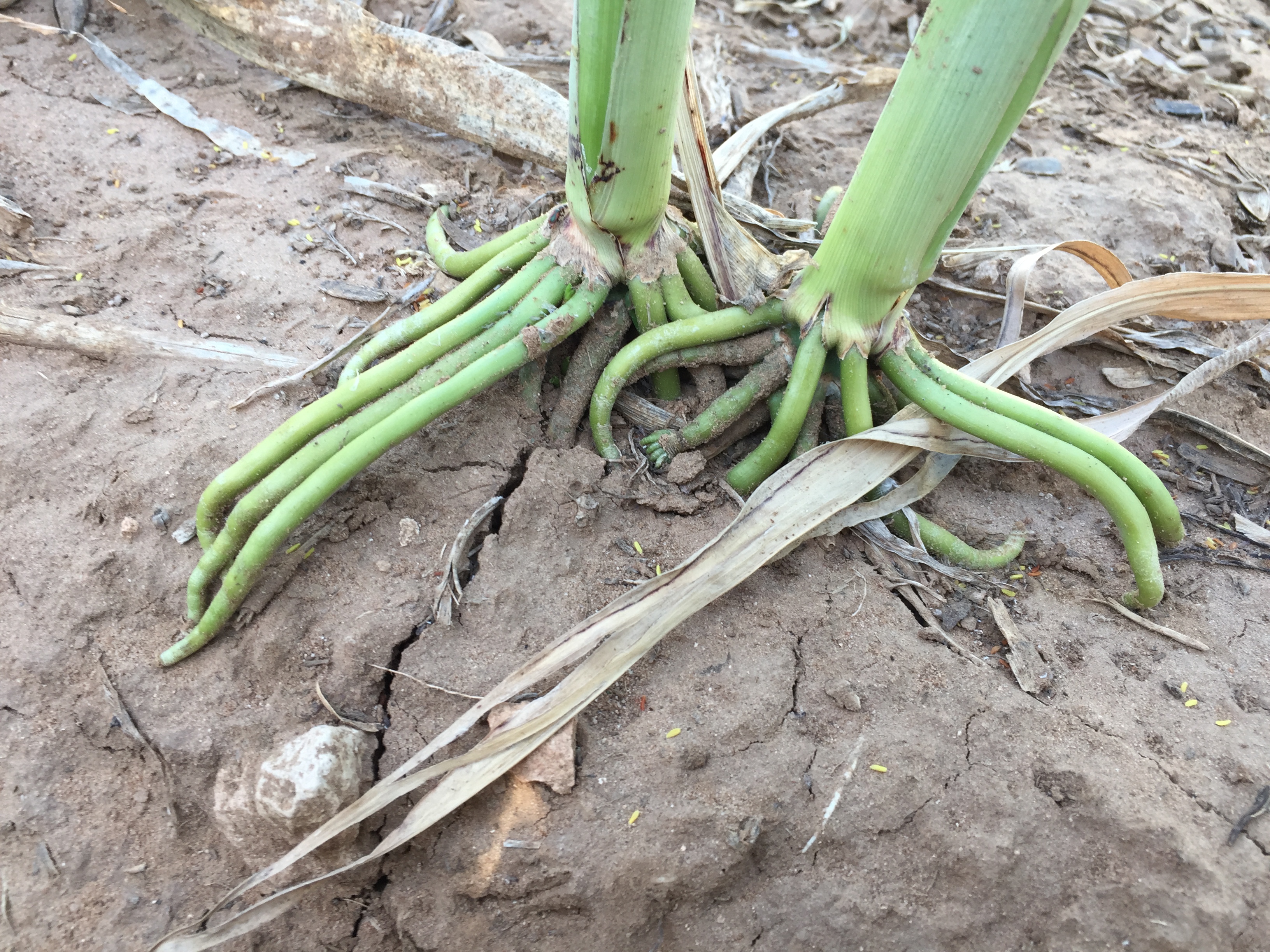This tip was provided by:
Calvin Trostle, Extension Agronomy, Lubbock, 806-746-6101, ctrostle@ag.tamu.edu
Statewide
Sorghum Physiology & Management (first in a series)
This is the first of a series of five Sorghum Tips AgriLife will share intermittently over fall and winter of 2017-2018.
Physiology of sorghum plants is described in detail in numerous publications, but in particular Kansas State’s Dr. Richard Vanderlip first wrote “How a Sorghum Plant Develops” in the 1970s. It was revised in 1993 (see https://www.bookstore.ksre.ksu.edu/pubs/S3.pdf). There are several practical considerations for a farmer, a crop consultant, agronomist, or educator to understand about how sorghum grows and how management may enhance or hinder sorghum productivity.
Physiology Driven Sorghum Management Consideration #1:
- Sorghum planting pattern may affect later brace root development and standability pending sorghum planting in a furrow, on flat ground, or on an elevated bed.
Row-crop sorghum is planted in a range of planting patterns from furrow planting to flat to planting on an elevated bed. Due to the increase of reduced tillage and no-till systems grain sorghum is more likely planted on flat ground than in the past. The drier conditions become, the more likely that sometimes brace roots have trouble penetrating dry or hard soil at the base of the plant. In contrast much sorghum historically has been planted at a slightly depressed location—a small furrow—relative to the surrounding soil. In some cases, in semi-arid regions sorghum may still be planted ‘in the hole,’ a furrow that may be 4-8” deep, which enhances potential access to moisture. In this situation (and also for flat-planted sorghum) when mechanical cultivation was still widely used, it was common for the cultivation to throw soil around the base of the sorghum plant once the plants were about 15” or taller. This practice buried small weeds in the row and placed the lower nodes (up to node 9), which produce brace roots, in the soil (Figs. 1A&B). Sorghum managed in this fashion is less likely to lodge.
In contrast western and southern areas of the U.S. grain sorghum belt where sorghum is grown in semi-arid dryland conditions and wind erosion is a major concern. Row crop fields—especially for cotton—are listed in ‘beds’ that leave a furrow of 4-10” deep (Fig. 2). At cotton planting the top of the bed is knocked off to plant the seed in moist soil that is still warmer than soil temperatures in flat ground. This practice, however, is extended to grain sorghum often to the detriment of root development and sorghum standability.

Figs. 1A&B. Soil cultivated around the base of sorghum plants buries brace roots (A); example of large brace roots that developed in the soil of an individual plant (B).

Fig. 2. In semi-arid regions of the U.S. sorghum belt sorghum and other crops are often planted and grown in an elevated position, which may curtail normal sorghum brace root anchorage.
When sorghum is planted and grown in this elevated position (Figs. 3A&B) and brace roots emerge, these roots are compromised as the brace roots:
- Encounter soil that is both warmer and drier, and individual brace root penetration is not assured (Fig. 4, Figs. 5A&B). This condition limits brace roots’ ability to penetrate the soil—roots will not move into or through dry soil (whereas soil in a furrow is cooler and more moist).
- If cultivation is attempted, it is more difficult to cultivate soil to the elevated base of the sorghum plants, because soil must be moved upward and remain there.

Figs. 3A&B. View of bed-planted sorghum postharvest (A) and furrow view after beds are reformed (B) demonstrating the elevated position (top of the bed) that sorghum and other crops like cotton are planted in to prevent bare soil wind erosion. In this field, surface residues after harvest have been retained (Fig. 3B, in contrast to Fig. 2) as the field has been relisted for the next crop.

Fig. 4. Brace root elongation in sorghum on top of a listed ridge where due to drier, warmer soil, some brace roots (left) have extended elongation, not yet able to penetrate the soil.

Figs. 5A&B. Individual sorghum brace roots unable to penetrate soil due to soil compaction, hot and dry conditions that are drying and warming surface soil, or possible herbicide carryover.








